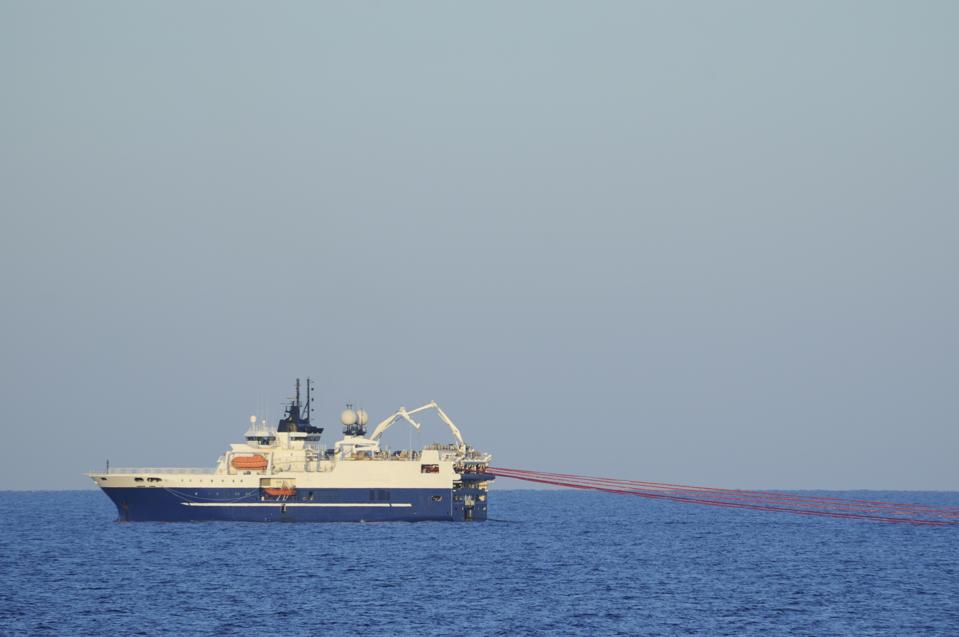As supporters of wind industrial development off the northeastern US Atlantic coast have discovered in recent years, the use of seismic surveys is an essential element of all energy exploration. But the deployment of such surveys also often becomes the source of controversy and opposition from environmental and animal rights activists.
Opposing offshore oil and gas development using allegations of seismic impacts to marine mammals and other wildlife has proven fertile ground for opponents in recent years. In an April 29 piece, the New York Times cites the example of a 2022 decision by the South African Supreme Court to rescind Shell Global’s permit to conduct seismic tests in the deep waters off the country’s eastern coast, what the natives refer to as the Wild Coast. Shell has since appealed the decision, which remains active in the courts.
South Africa has become a boom region for offshore oil and natural gas exploration in recent years, a topic I wrote about last November. Shell is just one of many companies with active leases to explore for energy not only off the Wild Coast, but across the entire breadth of the country’s coastline. Many believe South Africa’s offshore can develop into a vital resource basin to help the industry meet global demand for oil and gas in the coming decades.
Given the lack of adequate investment in the finding and development of new oil and gas reserves in recent years, South Africa has the potential, like Guyana and Suriname in South America, to become a key strategic resource area. But that cannot happen without the conduct of seismic surveys.
One problem producers have in defending disputes over seismic testing is that it is so easy to mischaracterize the nature and impacts of the process. The New York Times article states at one point that “Seismic testing can harm wildlife,” citing an article published last September by the University of Tasmania. That article discusses concerns that noise from underwater seismic tests can cause “whales [to] either to sing more loudly or to stop singing altogether, which can affect social structure and interaction.”
But experts at the EnerGeo Alliance, an international association for the geoscience industry, disputes these and other allegations, saying, “Seismic surveys are conducted using low-frequency sound waves to map the seabed. This technology is similar to ultrasound technology in that it uses sound to create an image in a non-invasive manner. Despite extensive speculation about possible adverse impacts from seismic surveys, no scientific data supports these claims. Seismic surveys are comparable in intensity to many naturally occurring ocean sound sources, temporary and transitory in scope, and the majority of the energy produced occurs at frequencies below the hearing range of many marine mammal species.”
No one in the oil and gas business, the offshore wind business, or any other segment of society wants to harm whales and other marine mammals. Indeed, those and other industries have invested billions in research and development over the years to ensure any impacts are minimal. And it must be pointed out here that regulators in the United States have consistently steadfastly denied that any scientific evidence exists to support claims that seismic has these alleged impacts.
That was the finding of an extensive study conducted by the Bureau of Ocean Energy Management (BOEM) during the Barack Obama administration in 2014. That effort grew out of a controversy at the time involving proposals to explore for oil and gas off the coast of South Carolina and other southeastern Atlantic states. BOEM reiterated the same finding again in January, 2024, as part of its refutation of claims that seismic surveys conducted by offshore wind developers were in part responsible for a rash of more than 70 whale beachings on the shores of New Jersey and other northeastern Atlantic states.
The Bottom Line
There can be no doubt that the deployment of seismic testing in ocean waters will remain a source of controversy for years to come. The playing field is too ripe with opportunities to create fear for opponents of energy development to ignore.
But the science as it exists today is clear, as confirmed by US presidential administrations of both political parties. Unless and until that status changes, court victories by parties who exploit fears over the science are likely to have brief shelf lives.

